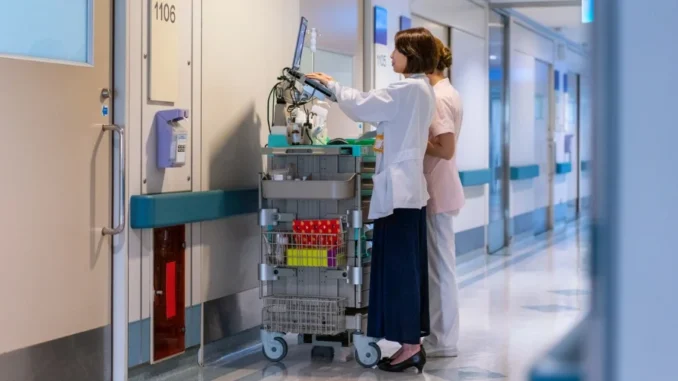
What is the purpose of a “Mr Gas Cart Lav Test,” and how does it improve safety during medical procedures?
The MR Gas Cart LAV Test is a critical procedure used in medical settings to ensure the safety and reliability of equipment that delivers gases to patients, especially during medical procedures involving anesthesia or respiratory support. This test is conducted on the MR gas cart—a device that stores and delivers medical gases, including oxygen, nitrous oxide, and anesthesia gases.
The purpose of the MR Gas Cart LAV Test is to verify that the system is free of leaks and functioning properly before use. By assessing the gas delivery system, this test ensures that the medical gases are being administered at the correct pressures and flow rates. It also helps identify potential faults, such as leaks or malfunctioning valves, which could compromise patient safety.
By performing the MR Gas Cart LAV Test, healthcare professionals can detect any issues with the gas delivery equipment in advance, preventing dangerous situations during medical procedures. This proactive safety check enhances the overall quality of patient care, especially in high-stakes environments like operating rooms or MRI suites, where precise gas delivery is crucial.
How can conducting a Mr Gas Cart Lav Test ensure compliance with healthcare regulations in the United States?
Conducting a MR Gas Cart Lav Test plays a crucial role in ensuring compliance with healthcare regulations in the United States, particularly within healthcare facilities like hospitals and clinics. The test is a standardized procedure to assess the functionality and safety of the gas delivery systems used in MRI (Magnetic Resonance Imaging) environments, which is essential for patient and staff safety.
Healthcare regulations, including those set by the FDA and OSHA, demand that facilities provide safe and effective medical equipment. A MR Gas Cart Lav Test helps ensure that the medical gas systems, particularly oxygen and anesthesia gases, are functioning correctly. This includes verifying that gas pressures are accurate, systems are leak-free, and that safety measures are in place to prevent exposure to harmful gases or interruptions in service.
In the United States, the NFPA 99 standard, which covers healthcare facilities, requires proper maintenance and testing of medical gas systems. Regular testing, such as the MR Gas Cart Lav Test, ensures compliance with this regulation, reducing risks associated with gas delivery failures. This can help avoid accidents, enhance patient safety, and ensure that medical professionals can provide the best care possible without interruptions from faulty gas systems.
What are the potential consequences for healthcare facilities that neglect regular Mr Gas Cart Lav Testing?
Neglecting regular MR Gas Cart Lav Test in healthcare facilities can lead to several severe consequences, both from a safety and regulatory perspective. These tests are critical in ensuring that medical gas systems, including the MR gas cart, function optimally and safely.
- Patient Safety Risks: The primary concern of not conducting regular MR Gas Cart Lav Test is the potential risk to patient safety. Malfunctions in the medical gas supply system could lead to interruptions in oxygen delivery or other vital gases required during procedures, posing a serious risk to patients, especially those in critical care.
- Compliance Issues: Healthcare facilities are required to comply with strict regulations and standards set by governing bodies like the FDA and OSHA. Failure to perform routine MR Gas Cart Lav Test could lead to non-compliance with these regulations, resulting in fines, penalties, or even suspension of operations.
- Increased Equipment Failures: Over time, equipment can degrade or develop faults, especially if it isn’t regularly tested. The MR gas cart is no exception; without timely MR Gas Cart Lav Test, the cart may malfunction, leading to costly repairs, extended downtime, or replacements.
- Operational Disruptions: When a MR Gas Cart Lav Test is neglected, it can cause operational disruptions, especially in emergency situations where the delivery of medical gases is critical. Delays in performing necessary tests can lead to a lack of preparedness in a medical emergency.
- Reputation Damage: A healthcare facility’s reputation can be severely impacted if patients or staff become aware that routine safety tests, like the MR Gas Cart Lav Test, are not being performed. This could lead to decreased trust and a potential loss of business.
How often should healthcare professionals perform a Mr Gas Cart Lav Test to maintain optimal functionality and patient safety?
Healthcare professionals should perform the MR Gas Cart Lav Test regularly to ensure the optimal functionality and safety of medical gas systems. The frequency of this test typically depends on the healthcare facility’s protocols, the manufacturer’s recommendations, and regulatory requirements. However, it is generally recommended to conduct the MR Gas Cart Lav Test at least annually to monitor and maintain the system’s integrity.
In some cases, more frequent testing may be necessary, especially if the equipment is subjected to heavy use or has experienced repairs. It’s crucial for healthcare facilities to adhere to industry standards and guidelines to ensure that the MR Gas Cart Lav Test is performed promptly, as this helps detect any issues that could compromise patient safety. Regular testing ensures the medical gas systems function correctly, minimizing the risk of contamination or malfunction.
What are the key steps involved in performing a Mr Gas Cart Lav Test, and can it be easily integrated into a hospital’s maintenance schedule?
Performing a MR Gas Cart Lav Test involves several critical steps to ensure that the gas cart used in medical settings is functioning properly and meets safety standards. Here’s a breakdown of the process:
- Preparation and Setup:
- Before conducting the MR Gas Cart Lav Test, ensure that the cart is powered down, and all components are in place.
- Verify the availability of necessary test equipment and personnel trained in performing the test.
- Visual Inspection:
- Begin by conducting a thorough visual inspection of the MR gas cart to check for any visible damage or wear that could affect its performance.
- Inspect hoses, valves, and connections to ensure they are properly sealed and intact.
- Functional Testing:
- Perform a functional test to ensure that all components of the cart, such as gas delivery systems, pressure regulators, and alarms, are working correctly.
- Check the gas flow rates and pressure readings to ensure they align with manufacturer specifications.
- Leak Testing:
- Conduct a leak test to verify there are no gas leaks from the system. This is crucial for patient safety in environments where gases are used, like MR rooms.
- Use a suitable leak detection solution to check joints, connectors, and seals.
- Calibration:
- Ensure that any pressure gauges, flow meters, or other monitoring instruments are calibrated correctly according to standard protocols.
- Final Checks and Reporting:
- Once all tests are complete, document the results and make any necessary adjustments to the cart.
- Provide a detailed report on the test findings and any corrective actions taken.
Integration into Hospital Maintenance Schedule
Integrating the MR Gas Cart Lav Test into a hospital’s maintenance schedule is feasible and essential for patient and staff safety. Here’s how it can be done:
- Routine Testing: Schedule the MR Gas Cart Lav Test as part of regular preventive maintenance routines. This can be done quarterly or as recommended by the cart’s manufacturer.
- Training and Awareness: Ensure that hospital maintenance staff are trained in performing the test and are aware of its importance.
- Systematic Documentation: Keep a record of all test results, repairs, and calibrations for future reference and regulatory compliance.
By incorporating these steps into the hospital’s regular maintenance schedule, the MR Gas Cart Lav Test can be efficiently and effectively managed, ensuring the safe operation of gas carts in critical medical settings.
Conclusion – MR gas cart LAV test
In conclusion, the MR gas cart LAV test is a critical procedure used to evaluate the performance and safety of gas carts in various industrial and safety applications. By conducting the MR gas cart LAV test, operators can ensure that their equipment meets the necessary standards for efficiency and reliability. This testing process plays a vital role in maintaining the integrity of the equipment and ensuring it operates effectively under pressure. Regular MR gas cart LAV tests are essential for preventing potential issues, ultimately improving operational safety and minimizing risks.

Leave a Reply